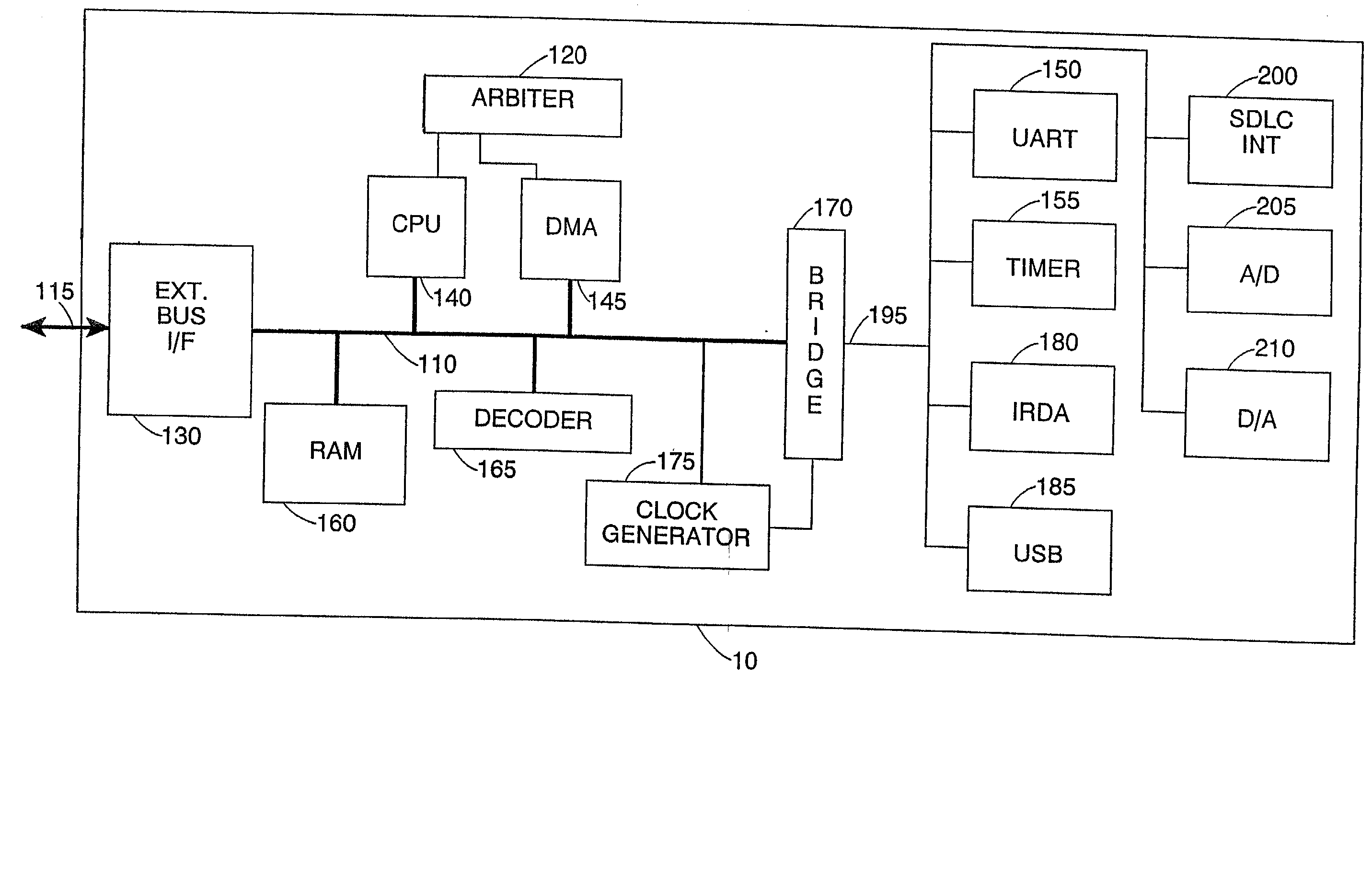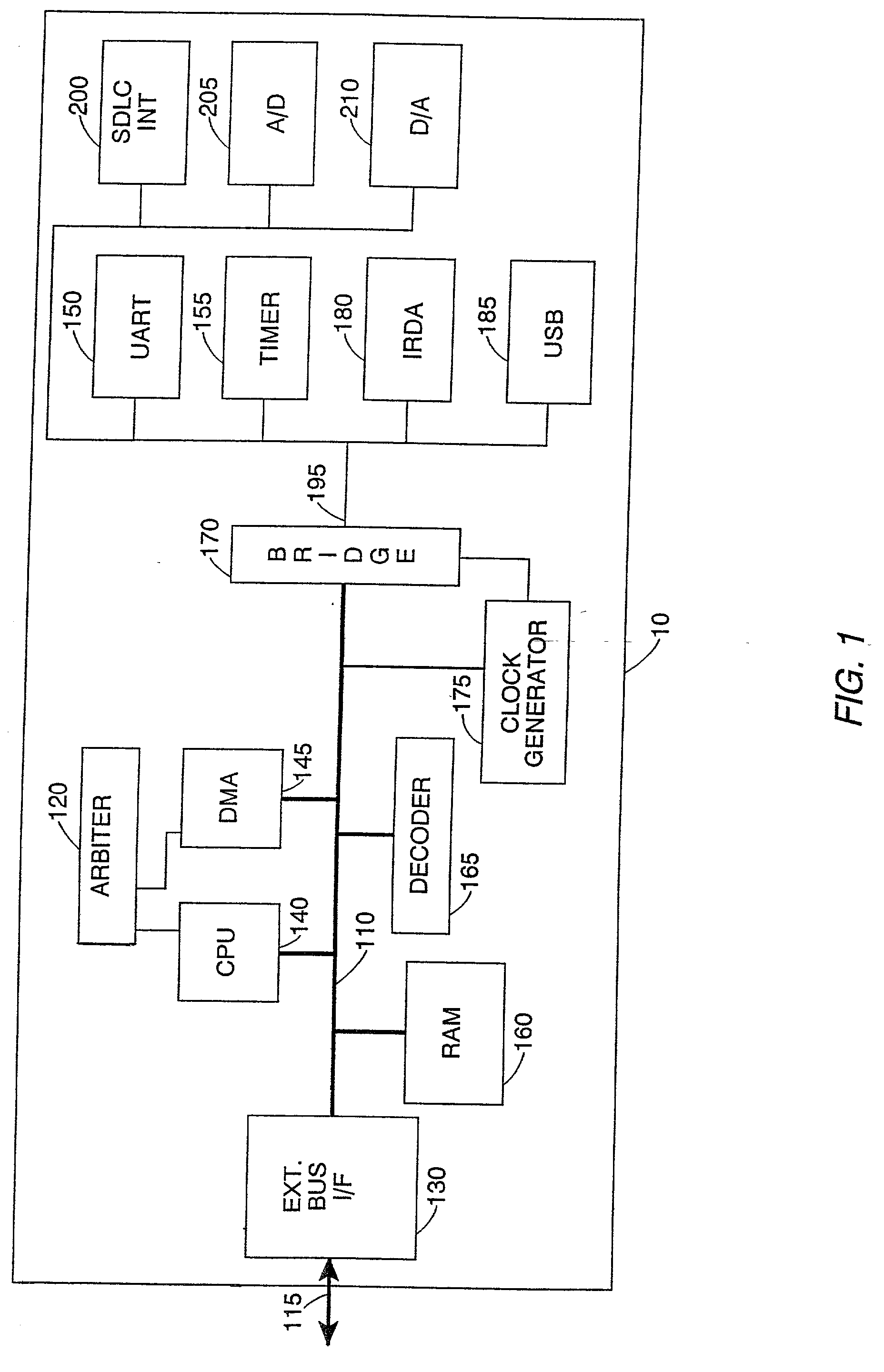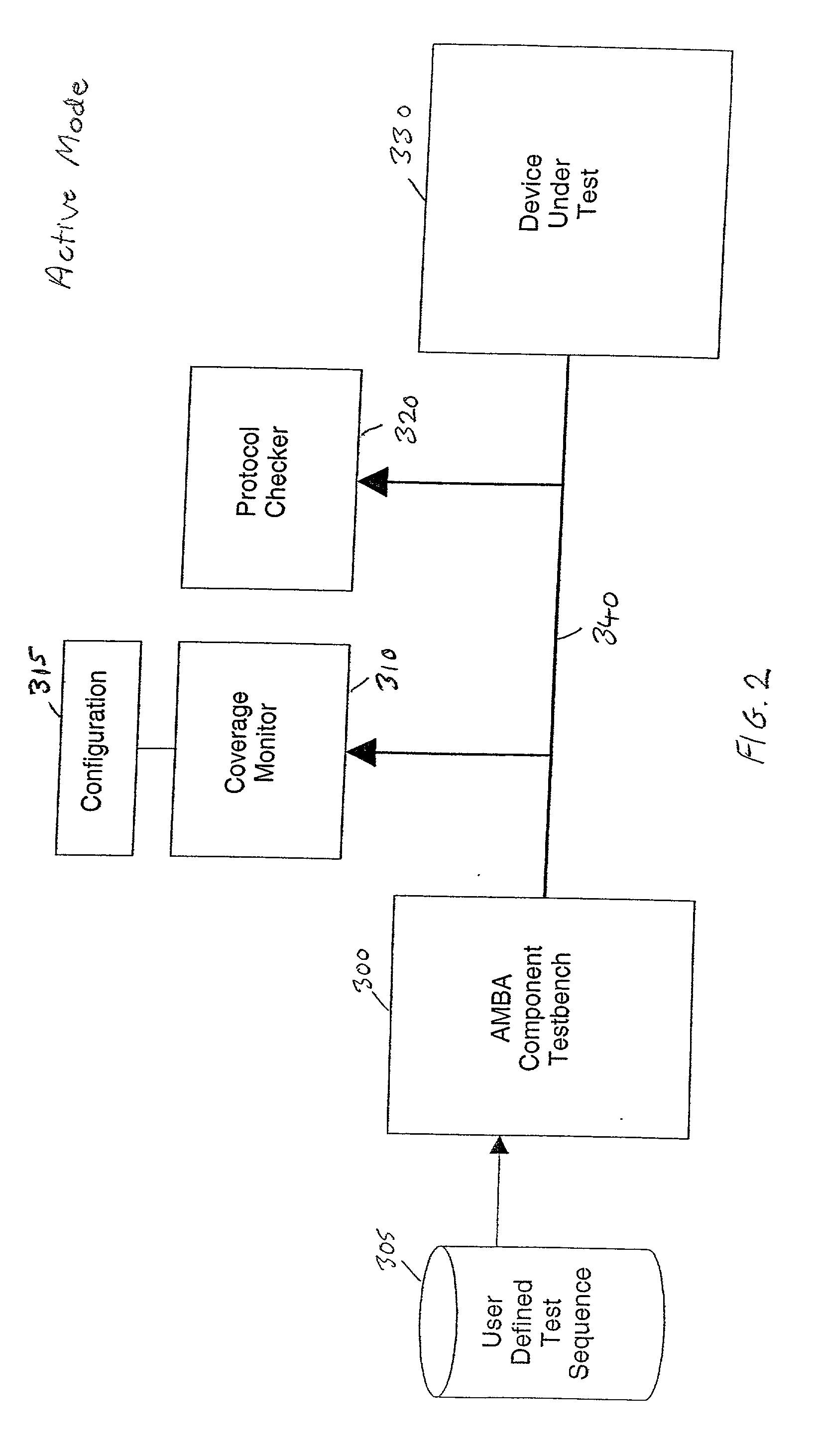Testing compliance of a device with a bus protocol
a technology of bus protocol and device, applied in the direction of transmission, instruments, electric digital data processing, etc., can solve the problems of time-consuming and labor-intensive process of testing a specific master device or slave device, or a combination of master and slave device, and can be very costly to perform the test procedure on the componen
- Summary
- Abstract
- Description
- Claims
- Application Information
AI Technical Summary
Benefits of technology
Problems solved by technology
Method used
Image
Examples
Embodiment Construction
[0049] For the purpose of illustrating a preferred embodiment of the present invention, the testing of a device to be connected to a bus operating in accordance with the "Advanced Microcontroller Bus Architecture" (AMBA) specification developed by ARM Limited will be considered. Before discussing in detail the testing procedures, a brief illustration of an implementation of a device incorporating buses operating in accordance with the AMBA specification will be given with reference to FIG. 1.
[0050] FIG. 1 illustrates an integrated circuit taking the form of a microcontroller chip or System on Chip (SoC) 10, which may be used within a device such as a personal organiser, a mobile phone, a television set top box, etc. The chip 10 has a system bus 110 (also referred to herein as an AHB) and a peripheral bus 195 (also referred to herein as an APB) connected via a bridge circuit 170. These buses operate in accordance with the AMBA specification. The AMBA specification defines an on-chip ...
PUM
 Login to View More
Login to View More Abstract
Description
Claims
Application Information
 Login to View More
Login to View More - R&D
- Intellectual Property
- Life Sciences
- Materials
- Tech Scout
- Unparalleled Data Quality
- Higher Quality Content
- 60% Fewer Hallucinations
Browse by: Latest US Patents, China's latest patents, Technical Efficacy Thesaurus, Application Domain, Technology Topic, Popular Technical Reports.
© 2025 PatSnap. All rights reserved.Legal|Privacy policy|Modern Slavery Act Transparency Statement|Sitemap|About US| Contact US: help@patsnap.com



